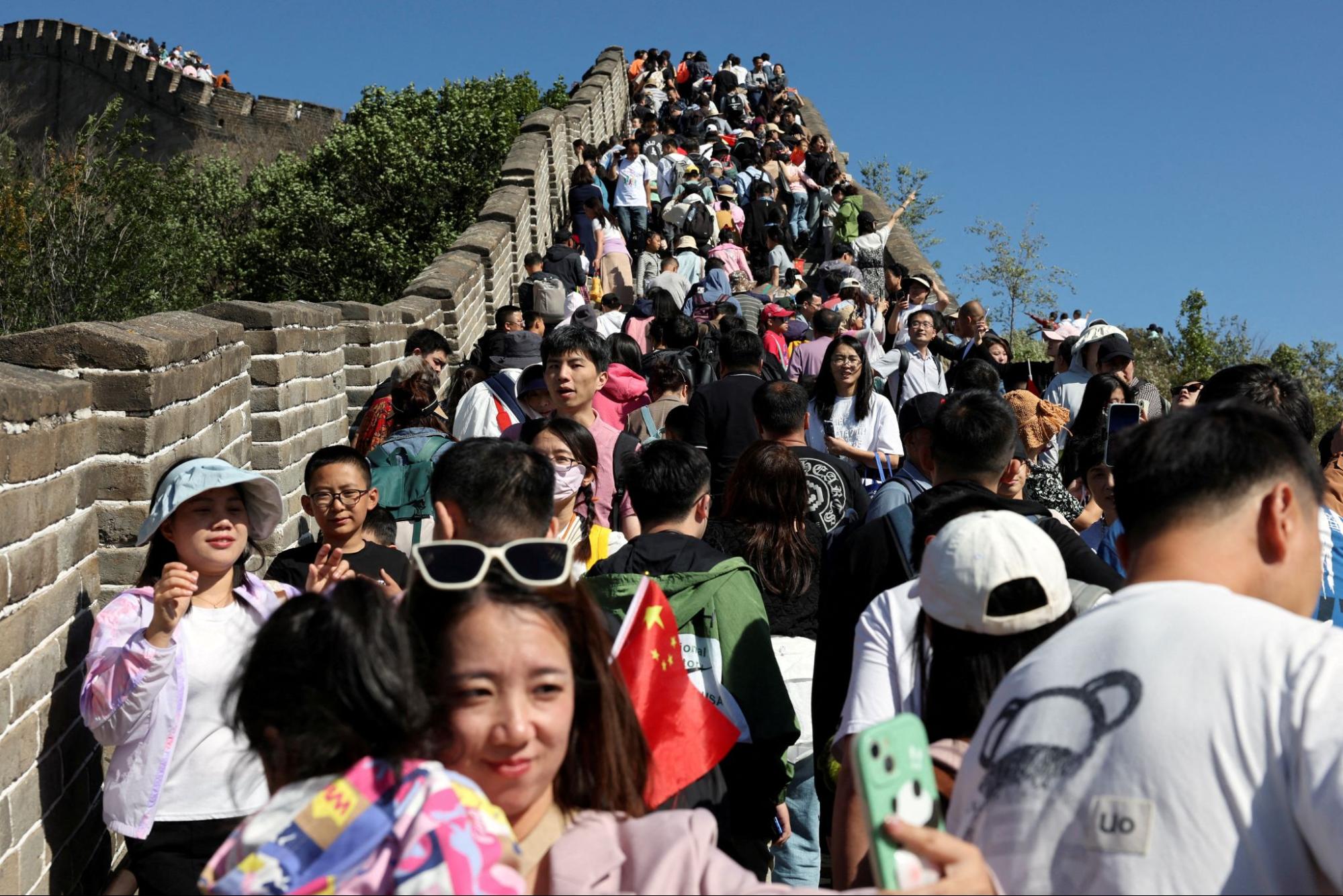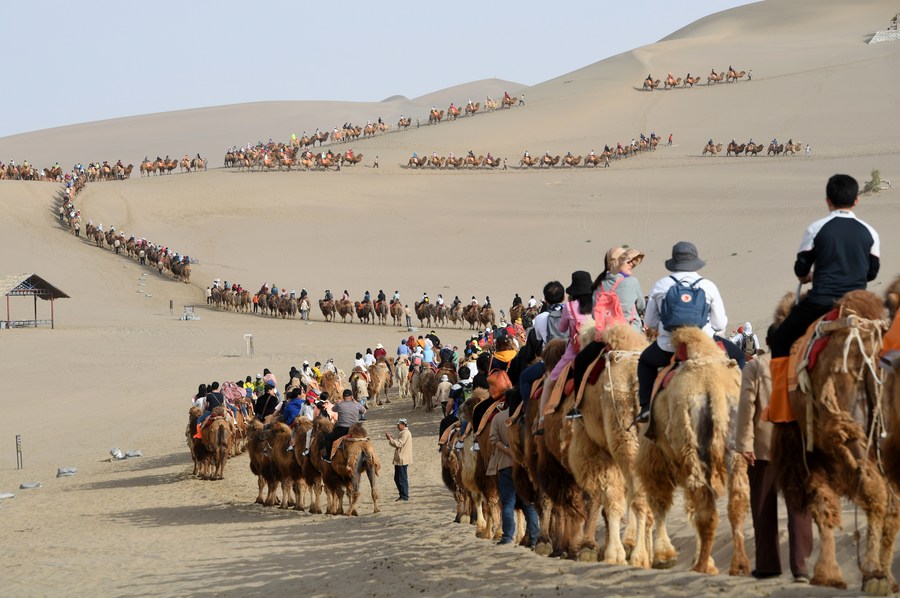China tourists swarmed attractions during Golden Week holiday
But they spent less than expected.

A typical Chinese national holiday is synonymous with massive crowds swarming renowned landmarks. It wasn’t like this during the COVID-zero policy, but this past National Day holiday week — known as Golden Week — saw human traffic jams return across the country.
During the eight-day break that ended on Friday — one day longer than usual this year, as it coincided with the Mid-Autumn Festival — 826 million Chinese people made domestic trips, which was up 71.3% from a year ago and 4.1% higher than in 2019, before Beijing introduced nationwide lockdown measures and stringent travel restrictions, according to official data released by the Ministry of Culture and Tourism.
Meanwhile, domestic tourism revenue reached 753.43 billion yuan ($103.24 billion), representing an increase of 1.5% compared with that in 2019.
Throughout the long holiday, Chinese social media sites were abuzz with reports from tourists marveling at — or complaining about — chronic overcrowding and lengthy queues at popular destinations.
One popular post on Douyin, the Chinese sibling of TikTok, featured footage of thousands of visitors flooding Badaling, the most visited section of the Great Wall in Beijing, causing bottlenecks at various checkpoints.
Another Douyin clip shows a jam-packed Tiananmen Square on the early morning of October 1, when a sea of people gathered to celebrate the country’s birthday by watching a traditional flag-raising ceremony.
Massive crowds also appeared in Shanghai’s historic Bund District overlooking the Huangpu River. The area was so busy that police officers were dispatched to direct foot traffic.
According to Mafengwo, a major online travel platform for booking hotels and flights in China, the top five Chinese cities in terms of tourism revenue during the holiday were Beijing, Chongqing, Shanghai, Chengdu, and Xi’an. But at the same time, a slew of niche tourism destinations — such as Yanbian of Jilin and Linzhi of Tibet — also saw a notable uptick in popularity.
In Dunhuang, a 2,000-year-old city known as a major stop on the ancient Silk Road, throngs of visitors — many on camelback — visited Mingsha Mountain and Crescent Spring. According to the local government of Dunhuang, over the course of the long break, more than 660,000 people arrived in the city, marking a staggering 1,065% year-on-year growth. The influx of tourists spent a total of 580 million yuan (79.5 million) in the region, representing a 960% increase compared with the same period in lockdown-hit 2022.
The travel frenzy was good news for tourism-dependent businesses around the country. Data released by the Chinese Ministry of Commerce show that in the first seven days of the holiday, there was a 9% year-on-year increase in the sales revenue of prominent retail and dining establishments. Meanwhile, major shopping districts nationwide experienced a substantial surge of 94.7% in consumer traffic. Chinese online travel agency Tongcheng Travel reported that the average cost of a domestic flight during Golden Week was nearly 1,300 yuan, up 40% from the summer.

But while the number of domestic trips and tourism revenue soared, both figures fell short of what Chinese state media had earlier cited the government as predicting. Before the holiday, Chinese officials had expected domestic travel to hit 896 million trips, with tourism spending reaching 782.5 billion yuan ($107 billion).
Cross-border traffic also showed a weaker-than-expected rebound. Official data suggested that during the longer-than-normal break, 11.8 million trips were made in and out of China, which was about 85% of the number registered over the same holiday period in 2019. On average, there were nearly 1.5 million international trips per day, which was below an earlier prediction reported by state media, which forecast nearly 1.6 million trips across the border a day.
Among outbound visits, around 30% of them were to Hong Kong and Macau, with other nearby destinations such as South Korea and Singapore still being popular.
Alipay, China’s largest payment app (with more than 700 million active monthly users), reported that the usage of its payment services by outbound travelers reached just 80% of the 2019 level. Meanwhile, the average spending per individual saw a minor increase, reaching 105% of the 2019 level.
Beijing has been betting on a wave of “revenge spending” to prop up economic growth after the easing of three years of COVID-zero restrictions last December. But as many Chinese remain cautious amid an ongoing real estate crisis and a youth unemployment rate exceeding 20%, the hoped-for surge in consumer spending hasn’t materialized.






